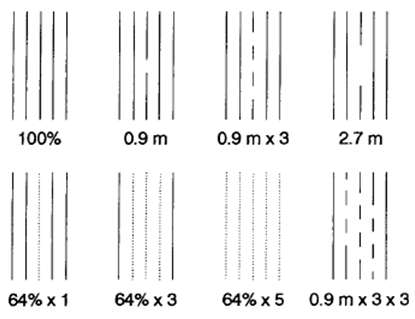Sorghum’s Ability to Compensate for Poor Stand
By Brent Bean, Sorghum Checkoff Agronomist
Lubbock, Texas
One of the more difficult decisions growers must make is when to replant a crop. Fortunately, sorghum has the ability to compensate for poor initial stands or even from early season loss of plants due to hail or other adverse environmental or cultural events. Sorghum compensates for stand reduction by increased tillering, increasing the number of seed per head, and increasing seed weight.
A very informative study on sorghum’s ability to compensate for stand reduction was conducted by Dr. Erick Larson, who is currently the Mississippi State Corn and Sorghum Specialist, when he was a graduate student at Kansas State University. Dryland studies were conducted at two locations with historically different rainfall amounts and over two years. Two hybrids were examined, one with a high tillering ability and the other that was considered to be low-tillering. The control plant populations were 32,000 and 50,000 plants per acre depending on the location, planted on 30 inch rows. Plants were then thinned to create treatments of within row skips of 3 feet and 9 feet with the adjacent rows remaining unharmed, 36 percent uniform plant reduction in a single row with adjacent rows unaffected, and a 36 percent uniform stand reduction of all rows. A final treatment was made up of 3 foot skips scattered within adjacent rows. More details of the study design and results can be found in Agronomy Journal Vol. 86, pg 474-477.
Interestingly, there was no difference between the high tillering and low tillering hybrids in their ability to compensate for yield. Both tillering and the ability to increase the number of seed per head were important in compensating for yield. As long as the adjacent rows remained intact it took a 9 foot skip within a row to significantly reduce yield (5.1 percent). A 36 percent uniform plant reduction reduced yield only 6.9 percent. The most severe reduction in yield in this study was 10.9 percent when 3 foot skips were present in adjacent rows. In summary, yield reduction in sorghum is likely only where plant stand reduction is severe, resulting in long, in-row skips or when many adjacent rows are affected with moderate skips. A 36 percent uniform reduction of plants did not significantly reduce yield
Graphic representations of sorghum stand reduction and skip pattern configurations. Middle three rows were harvested to determine yield. E. Larson and R. Vanderlip. Agron J. 86:476.





